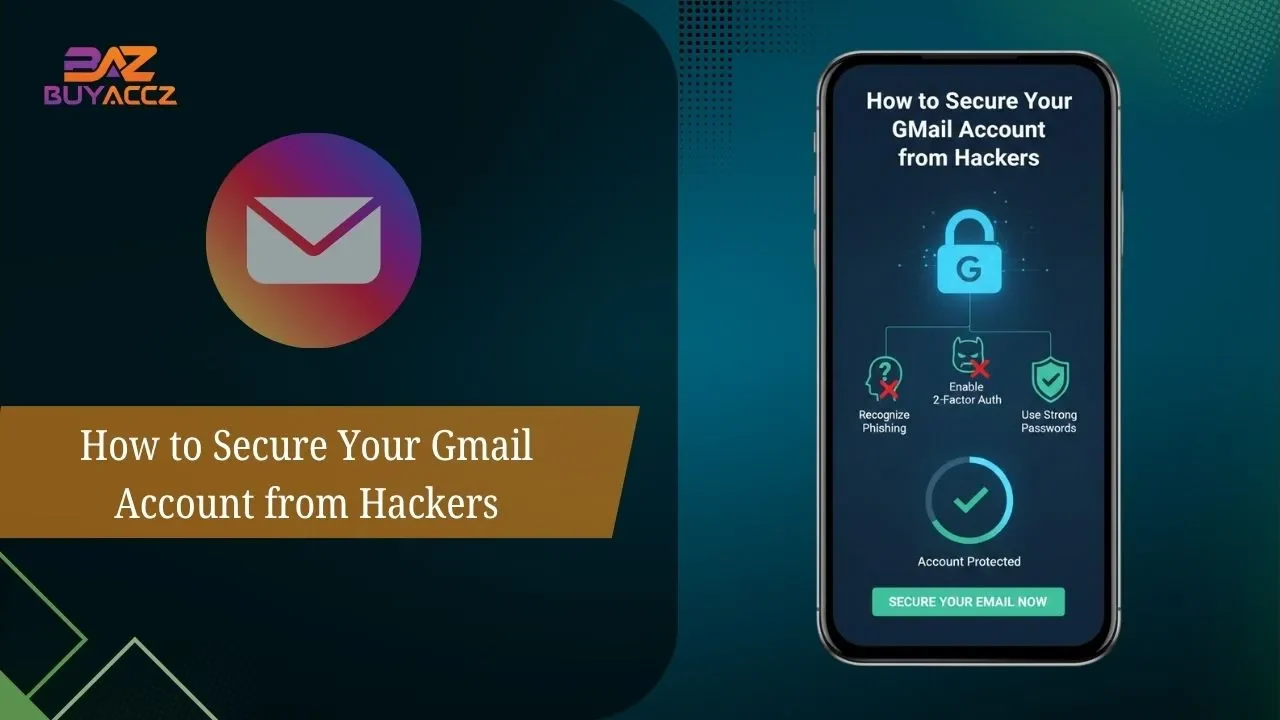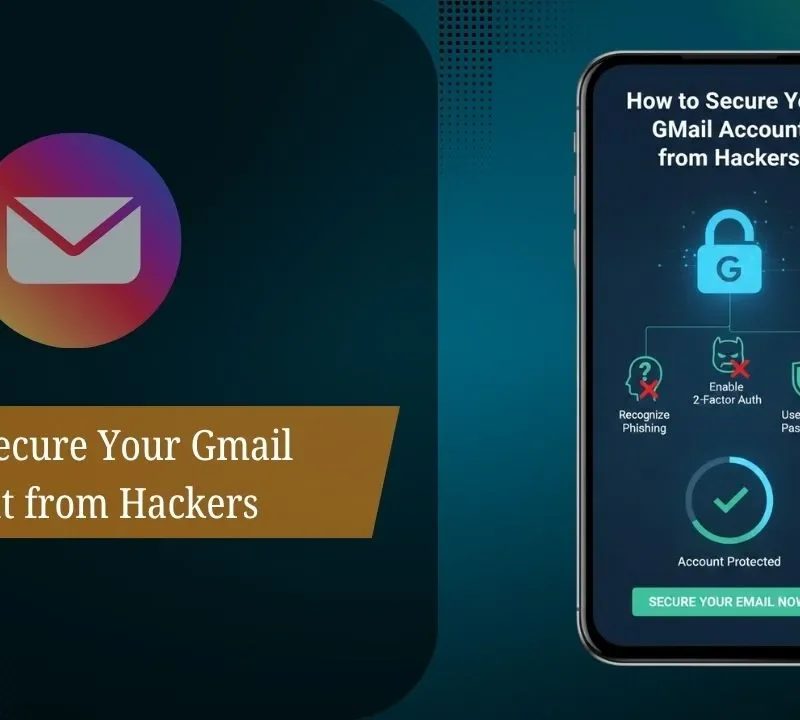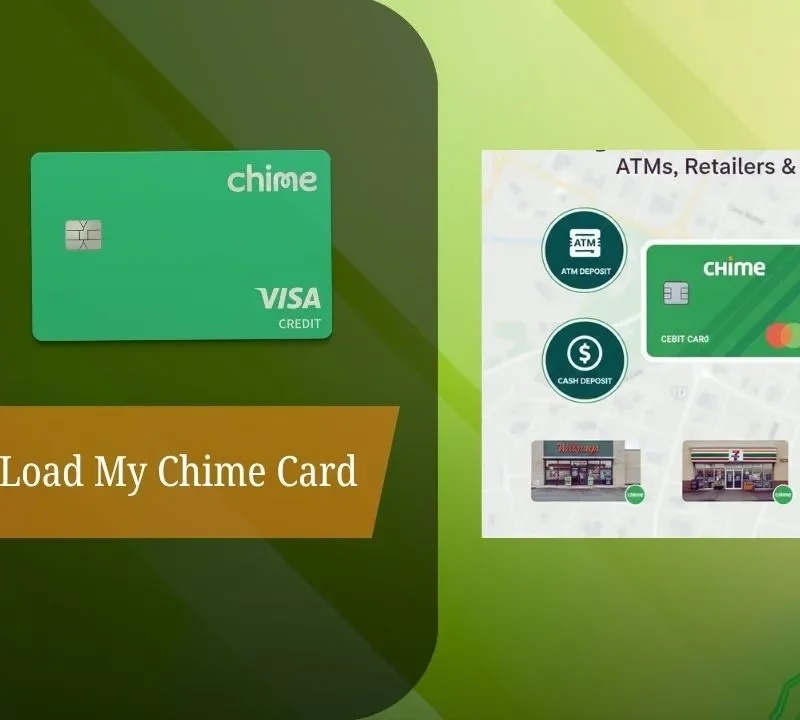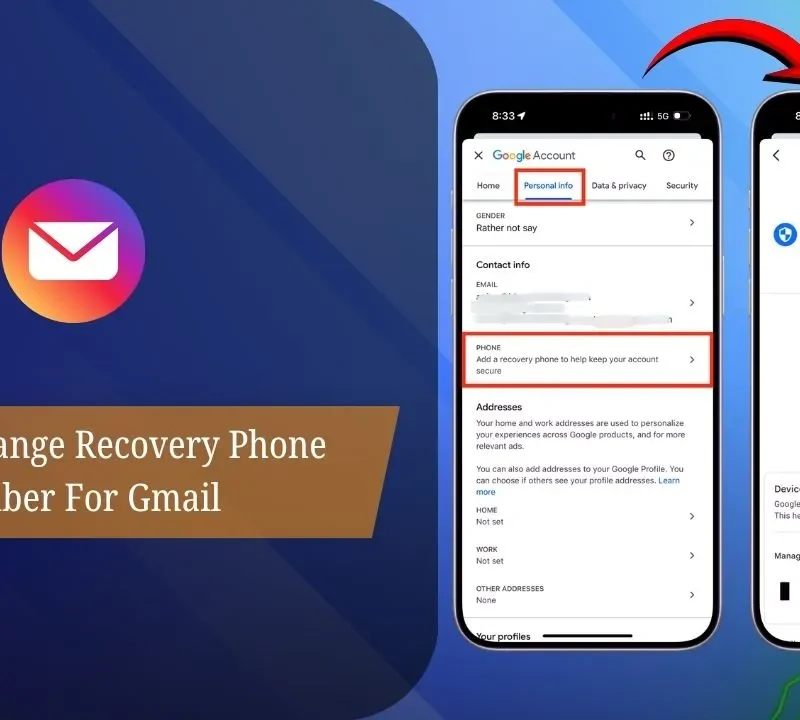In today’s digital world, safeguarding your Gmail account is more important than ever. Just because you’ve never had your Gmail account hacked doesn’t mean it can’t still happen whether you have a regular @gmail.com address or use Google Apps for business with a custom domain (or several).
Given the fact that so much of our digital lives is wrapped up in Google services, this story has an unhappy ending for anyone who finds themselves locked out. This guide will walk you through simple and effective ways to step up your Gmail security.
From learning how to turn on two-factor authentication and spot phishing attempts to forming strong passwords, you’ll become trained in the ways of making sure that no one gets inside. By following these security measures that are known to work, you can ensure your Gmail account is safe, and your personal privacy won’t be compromised or misappropriated by hackers. Start securing your email now to protect your digital life.
Why Gmail Account Security Is Important
Protecting your Gmail account in order to safeguard your digital identity, as well as the personal and financial information stored inside it, is of the utmost importance due to how much your email is connected with other services.
Gmail has strong defenses in place by default, such as spam filters, phishing detection, malware scanning, and the automatic encryption of nearly every email, but these alone are not invincible. Users must practice good internet hygiene by creating strong, unique passwords, turning on two-factor authentication, checking account settings, and reviewing account activity to spot suspicious behavior. And make sure your employees understand how to recognize a phishing attempt.
Enhancing Your Gmail Account security reduces the threat of unauthorized access, identity theft, and other bad things like disclosure of sensitive info in your personal or business communication. Google’s layer of protection, coupled with proactive user behavior, constitutes the most effective defense against sophisticated digital threats.
Common Ways Hackers Target Gmail Accounts
Hackers frequently compromise Your Gmail accounts via phishing schemes to swipe passwords and 2FA codes; session hijacking following a browser attack even after login; consent phishing, where gullible users can unwittingly grant attackers API access themselves; post-login malware and malicious browser extensions stealing tokens;
SIM swapping for SMS codes; and establishing secret email forwarding rules to spy without being spotted. Secure accounts with strong, unique passwords and advanced multi-factor authentication, such as FIDO2 keys, review third-party app access to your Gmail, check email forwarding settings, and decide whether a new filter or rule is involved in spamming.
Step-by-Step Guide to Securing Your Gmail Account
Use a Strong Password
Set a strong, unique password for your Gmail account. Instead, mix it up with a combination of letters, numbers, and symbols, while avoiding predictable passwords from popular songs, sports teams, or brands. You can use a secure password manager to make strong passwords and store them safely.
Enable Two-Factor Authentication (2FA).
Turn on two-factor authentication for your Gmail account. This offers an added layer of security, forcing a second verification (like a code sent to your phone or an inserted security key) after you enter your password. This is a lot lower security risk if your password does get leaked.
Check your Trusted Devices and Account Activity.
Monitor the list of devices and locations where your account has been logged in regularly and remove access from any suspicious or unused devices. Also, keep an eye on recent account activity so that you can spot any strange sign-ins or actions, and if you notice anything odd, secure your account right away.
Review and Organize Third-Party App Access
Check which third-party apps and services can access your Gmail account. Take a look for any apps you do not remember installing or that you no longer need. Be wary of giving apps access to permissions, and only install extensions from reputable sources to avoid compromising on privacy or security.
Appl.Gate – Using Google Security Tools and Programs
Leverage Gmail’s native security features like Security Checkup, which prompts you through the steps for bolstering account defenses, such as verifying recovery information. If you need maximum security on your account, look into signing up for Google’s Advanced Protection Program.
Best Security Features Offered by Gmail
Two-Step Verification (2SV): This provides an essential second layer of account security by requiring a secondary code as well as your password to complete the login. It significantly minimizes the opportunity of unauthorized login if the password is leaked.
AI-Based Security Threat Detection and Anti-Phishing Protection: Gmail comes with built-in artificial intelligence (AI) security, so employees can confidently check their email on the go using collaboration apps that employ AI to block phishing emails and malware. This provides users with a high degree of protection from multiple email cyber threats.
Encryption and Secure Connections: All email is sent securely over TLS and HTTPS, meaning no one can snoop on email flights between senders from the sender to the recipient..
How to Use Google Account Alerts Effectively
Google Account alerts can be quickly and easily configured to alert you about things you care about. To begin, sign in to your Google account and visit the Google Alerts page. Enter the search How to Secure Your Gmail Account from Hackers terms or keywords you wish to track and click on “Show options” if you want to customize things like how often you get alerts, what kind of sources to include, language, and region.
When you’re done, click “Create Alert,” and you will begin to receive emails with updates related to your search criterion. From this same page, you can manipulate, modify, or delete these alerts. This uncomplicated configuration makes it easy to stay informed instead of searching for updates yourself.
How to Recover a Hacked Gmail Account
Go ahead and log in to your Gmail account. For those that are locked out, get to Google Account Recovery as quickly as you can and follow through the process, be it with recovery email, phone number, or security questions.
Prove your identity with your recovery options (these will have been either codes or contact details such as an email address or phone number you can use) by answering security questions and/or entering a given date when you created the account and most recent password.
After you regain access, change your password to a strong and unique one. Also, update recovery email and phone number details to something that is secure and current. Check all devices linked to your account and sign out of the ones that aren’t yours so that hacker can no longer access your account.
Set up 2-step verification for an extra layer of security, and use SMS codes, authenticator apps, or a security key to ensure continued unauthorized access is not possible. Inspect your account activity for actions you didn’t take, confirm settings haven’t been tampered with, and notify contacts if something’s fishy.
FAQs
1. How do I keep hackers out of my Gmail account?
You can keep your Gmail safe by turning on 2-Step Verification, choosing a strong password, keeping recovery options current, and watching for signs of suspicious activity.
2. What is 2-Step Verification, and why should we use it for Gmail?
2-Step Verification protects your account by requiring a second verifiable code during logins to keep hackers out.
3. How can I tell if someone has hacked into my Gmail account?
Review your login activity for unknown devices, unexpected password reset emails, and messages you didn’t send.
4. What is a strong password for Gmail?
Pick a long password with letters, numbers, and symbols; don’t use personal details or passwords you also use on other platforms.
5. What if I believe my Gmail is hacked?
Change your password, check activity, remove unknown devices, & add recovery contact info.
6. How can I protect my Gmail on mobiles?
Lock your screen, update your Gmail app, don’t use public Wi-Fi, and switch on Google Prompt or authenticator apps.
7. Can I use the public Wi-Fi to sign into my Gmail?
Not recommended. Hackers can intercept your data. Just turn off the Wi-Fi on your mobile device and rely only on mobile data or a network you trust.
8. Why Change Gmail Recovery Phone Number and Email?
New recovery options also make it easier to get back on with your work should your account be hacked or you lose a password.






